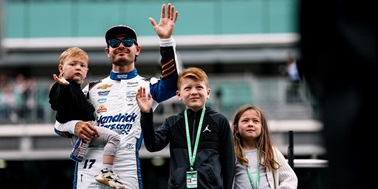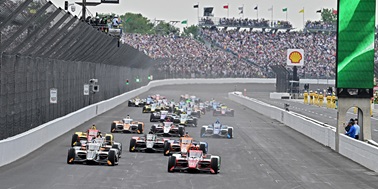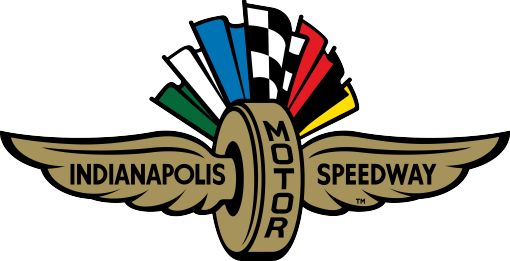A one-of-a-kind car with a unique history, Jerry Smith’s Templar Roadster made national headlines in 1920 when Erwin G. “Cannon Ball” Baker drove it from New York to Los Angeles in a record six days, 17 hours and 33 minutes. Years later, Baker’s landmark effort inspired the outlaw Cannonball Run Sea-To-Shining Sea Memorial Race from New York to Redondo Beach, Calif., which was held four times in the 1970s. Those races were later celebrated in the Hollywood film productions “Cannonball,” “The Cannonball Run,” “Cannonball Run II,” “The Gumball Rally” and “Speed Zone.”
Two months after his triumphant cross-country journey, Baker drove the same car 1,642 miles in a record-setting two days, four hours from Vancouver, British Columbia, to Tijuana, Mexico, during the Three Flags Run.
Baker’s racing success included a win in a 10-mile motorcycle race for amateurs at the Indianapolis Motor Speedway in 1909, and an 11th-place finish at the 1922 Indianapolis 500 despite numerous pit stops in the first 50 miles of the race. In 1948, Baker was named the first commissioner of NASCAR, and in 1981 he was inducted into the Auto Racing Hall of Fame, which is located in the Indianapolis Motor Speedway Hall of Fame Museum.
Beginning in 1917, The Templar Motors Corporation of Cleveland produced 6,000 cars in its seven years of operation, and it’s believed that less than 30 Templars remain. The company took its name from the Order of Knights Templar, which was formed during the Crusades in the 12th century.
Smith’s Templar Roadster model featured the first use of four-wheel brakes in a car, in addition to other features such as electric searchlights, tilt steering wheels and air compressors. After its record-setting excursions in 1920, the roadster owned by Smith was sent back to the Templar factory for installation of a six-cylinder engine. When he purchased the car in the 1960s, Smith was given the car’s original four-cylinder engine, which he had restored and placed back in the car.
Acquired by his father in the late 1960s, Smith said owning such a historically significant car has been an interesting experience.
“It’s pretty cool,” he said. “A lot of people always know about “Cannon Ball” because of the ‘Cannonball Run’ movies. They don’t really talk about him – they just always thought it was just a name, so a lot of people are surprised to learn that he was a person. He’s not quite as famous as a Barney Oldfield was, but it’s pretty cool.”
Smith will drive his Templar at the Celebration of Automobiles when all the car owners have the opportunity to take their classic cars around the famed Indianapolis Motor Speedway oval Friday, May 11. Although the car runs well, Smith only gets behind the wheel for special occasions.
“The availability of parts is pretty slim, so if something goes wrong you have to fabricate something, so it’s scary to drive it much and know you can’t buy a part for it,” he said.
Smith refurbished a 1923 Duesenberg Model A Sport Phaeton that appeared at last year’s Celebration of Automobiles, which was the same model of the Pace Car for that year’s Indianapolis 500.
“It was a pretty awesome show,” he said. “I’d never seen so many different and unique cars, including all the old vintage Indy cars, and cars that were built during the era of the first race like the old Nationals and other old street cars that you don’t see anymore. That was pretty unique.”
Celebration of Automobiles Entrant: 1920 Templar Experimental Roadster

A one-of-a-kind car with a unique history, Jerry Smith’s Templar Roadster made national headlines in 1920 when Erwin G. “Cannon Ball” Baker drove it from New York to Los Angeles in a record six days, 17 hours and 33 minutes. Years later, Baker’s landmark effort inspired the outlaw Cannonball Run Sea-To-Shining Sea Memorial Race from New York to Redondo Beach, Calif., which was held four times in the 1970s. Those races were later celebrated in the Hollywood film productions “Cannonball,” “The Cannonball Run,” “Cannonball Run II,” “The Gumball Rally” and “Speed Zone.” Two months after his triumphant cross-country journey, Baker drove the same car 1,642 miles in a record-setting two days, four hours from Vancouver, British Columbia, to Tijuana, Mexico, during the Three Flags Run.
Latest News
View All News
Future Sprint Car Stars To Race in July at The Dirt Track at IMS
Owen Larson (photo, center), the 9-year-old son of superstar Kyle Larson, will race a Junior Sprint car on The Dirt Track at IMS.

Patriotic Flair Kicks Off Month of May Ticket Renewals for 2026
The renewal deadline is Monday, June 16.

109th Indianapolis 500 Post-Race Notes
A look at the milestones set Sunday in the 109th edition of "The Greatest Spectacle in Racing" at IMS.
